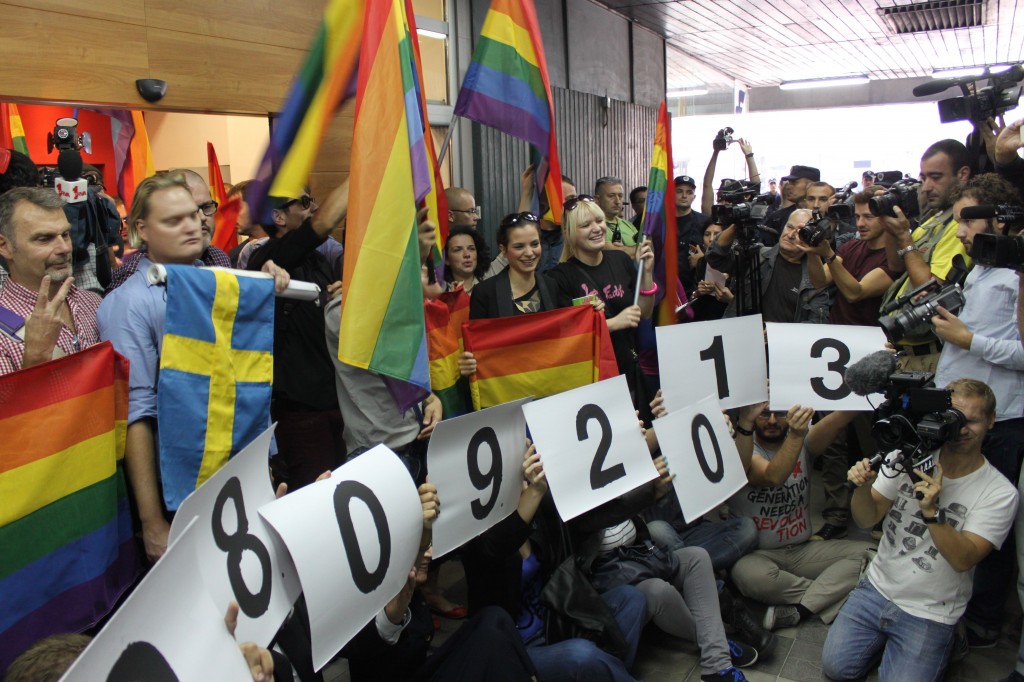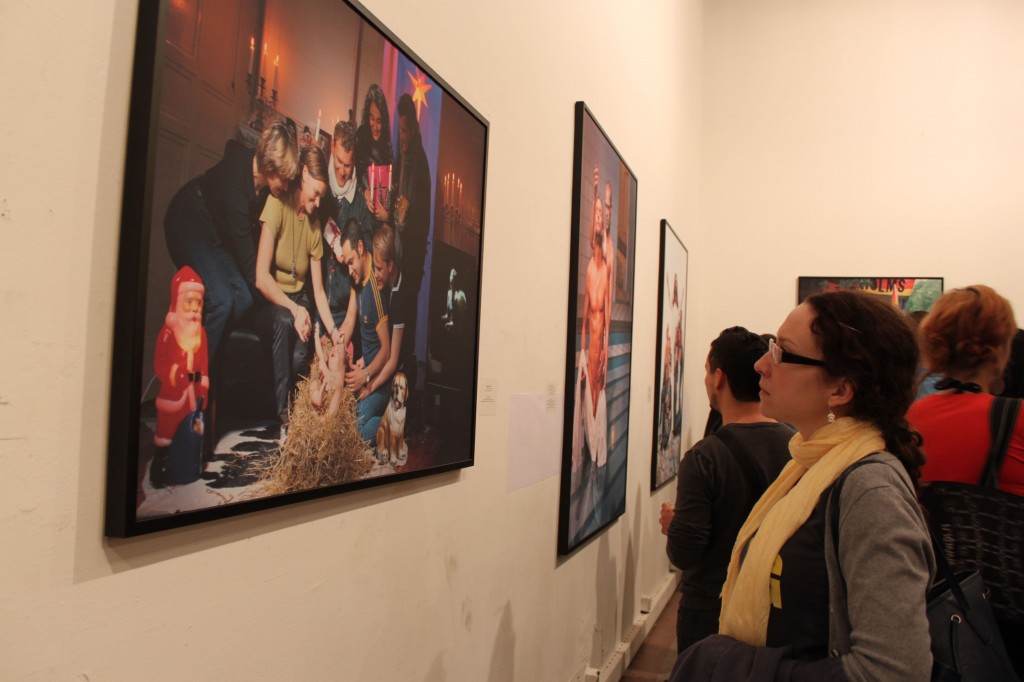
In a conference building in Belgrade, around 200 people waved rainbow flags and listened to speeches from the Pride Week organizing committee and international guests on Saturday. This, however, was as close as Serbia’s LGBT community came to holding a gay pride parade this year.
Three days earlier the Serbian government forbade organizers from holding a pride parade in Belgrade for the second year in a row. Prime Minister Ivica Dačić told local media that he made the decision because of safety risks, as hooligan groups threatened to attack the march if it was to take place. To protest against another ban on their parade, LGBT activists organized a “Pride Within Four Walls” gathering to protest the way they are treated by their government.
Boris Dittrich, Human Rights Watch’s LGBT rights advocacy director, condemned the cancellation of the parade in a press release, stating that by pointing “to security risks without any visible effort to come up with a plan to make the Belgrade Pride Parade happen [the government] is succumbing to threats of violence.”
According to the organizing committee for the Pride Week 2012, the decision was based more on politics than security. About 80 percent of Serbs are opposed to holding a gay pride parade, and politicians are dependent on their votes. Organizers also believe that the state is not making enough effort to track down and prosecute the hooligans who are responsible for making threats. Some even believe that important political figures are involved in extreme right-wing movements that recruit young people to go to the streets to riot. Weeks in advance, graffiti appeared in the city center, threatening, “We are waiting for you,” “Kill gays” and “You won’t walk.”
On Saturday morning, although there was no parade, the city was filled with riot police and soldiers. At 10 a.m. the alternative Pride Within Four Walls event began. After some speeches inside the conference room in the Media Centre in Terazija, organizers announced that they would try to go to the streets anyway. A few of them went outside but were immediately stopped by police. Eventually they gave up and sat down in the alley in front of the door. Banners were held announcing that the next pride parade in Belgrade would be held on September 28, 2013.
The last time such a parade did happen was in October 2010, and it was a bloody one. Around 5,000 police fought off a few thousand hooligans in order to protect a thousand parade participants. Hooligans stormed the city as if they were an army — throwing stones and Molotov cocktails, and setting cars on fire. While none of the pride participants were hurt, over a hundred police officers were injured.
These hooligans are well organized, and they’re believed to be encouraged and even paid by church and soccer clubs. They belong to extremist right-wing movements — like Dveri, Obraz and 1389 — that burned the embassies of countries that recognized Kosovo as an independent country and barricaded the border between North and South Kosovo last year. How many people are involved in these groups is unclear, but according to analysts they are growing every year. Their apparent goals are to keep Serbia orthodox and patriotic, to retain Kosovo as a part of Serbia and to stand behind war criminals like Radovan Karadzic — mastermind of the Srebrenica genocide in 1995, who is now at The Hague standing trial for war crimes.
“Banning the pride again shows how our politicians deal with human rights violations,” says Maja Mićić, director of the Youth Initiative for Human Rights. She points out that this is not solely about LGBT rights, but is at the core of human rights in general. “We are fools if we believe that this is isolated, that this will not happen to other minority groups. What’s next? Today it’s the gays; tomorrow it’s everyone having the wrong hair color.” She adds, “We are a homophobic society and that’s a consequence of the culture of patriotism and nationalism in the 1990s.”
Russia’s recent ban on all gay pride events for 100 years and Serbia’s ban this year are not good signs for the future. “We are not Russia… yet,” Mićić says. “But we are so close.”
This year the organizing committee not only planned a pride march but a week of LGBT activities. It started with a lesbian wedding flash mob in downtown Belgrade. On September 28, two brides calling themselves Hope and Faith kissed each other on the biggest shopping street Knez Mihailova after they got “married.”
A few days later the leader of the Orthodox Church called upon the government to prevent the “parade of shame.” In a statement Patriarch Irinej said the parade would cast “a heavy shadow on Belgrade, our centuries-old Christian culture and the dignity of the family as the foundation of the human kind.”

The powerful Orthodox Church also lobbied for cancellation of Ecce Homo, a provocative exhibition by the Swedish photographer Elisabeth Ohlson Wallin that includes images of Christ being gay. After the ban on the parade, the opening of this exhibition on October 3 was the biggest concern for government and security forces. As many as 2,000 police officers surrounded the 200 people who came to gallery. Around 50 people from the right-wing movement Dveri showed up to protest against the exhibition and were stopped by police.
The European Union is watching Serbia closely since the country is bidding for membership in the near future. But holding a peaceful pride parade is not a condition for entering the EU. Dutch member of the European Parliament Marije Cornelissen, who was in Belgrade to show her support to the LGBT community, told me, “The government is supposed to guarantee the safety of minority groups. If they can not, they are not ready to join EU.”
Much like the exhibition, the indoor pride parade ended peacefully. There were no hooligans to be seen in the area. While authorities will likely use this fact to argue that their decision prevented bloodshed, it gives the LGBT movement even more reason to doubt the decision to cancel the parade due to threats of violence.
